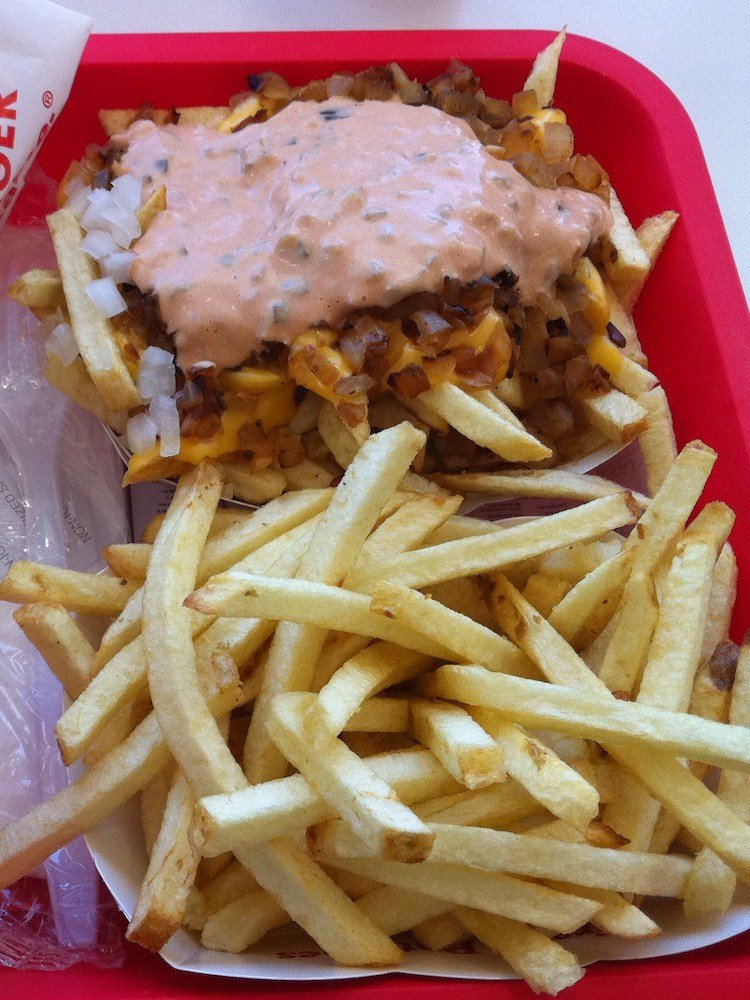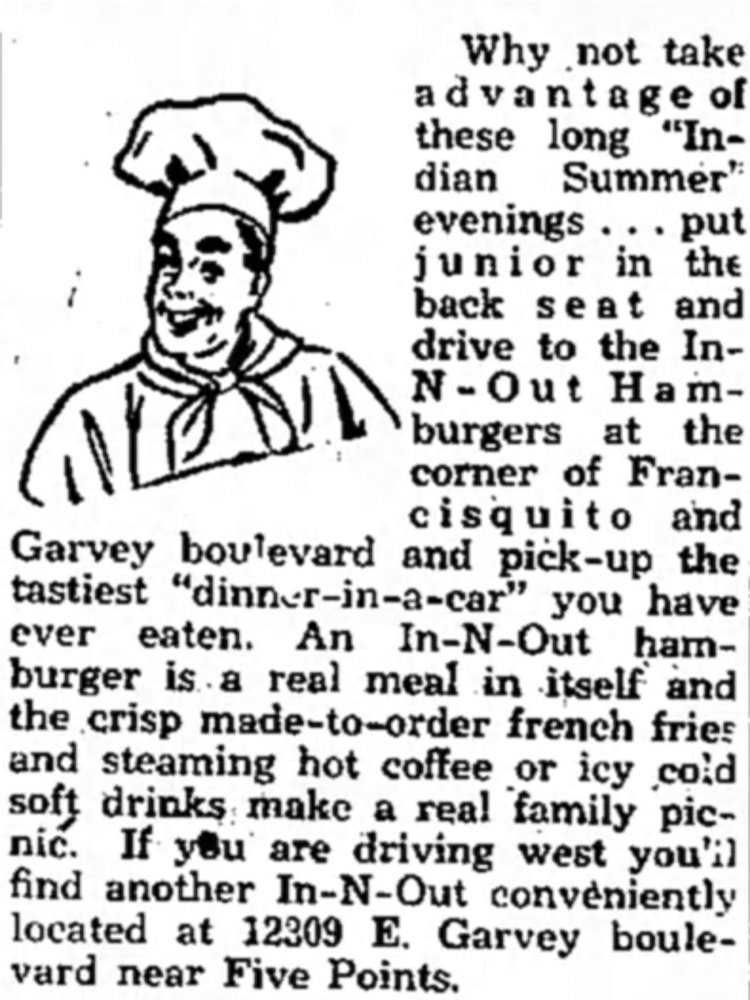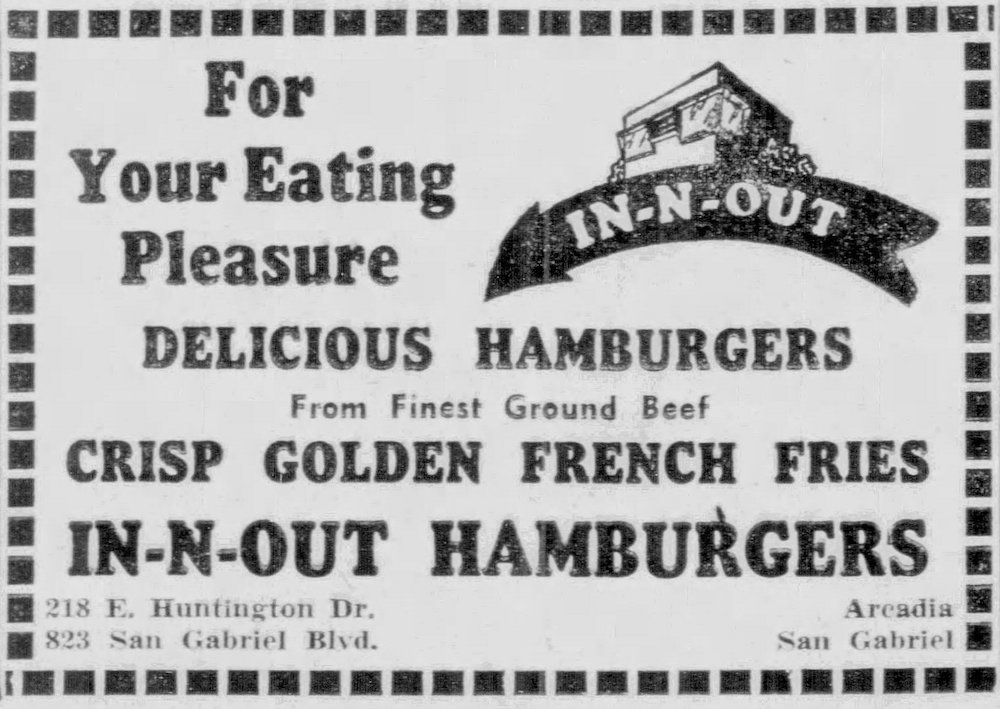Many people view my thoughts on In-N-Out as complete hamburger heresy. I like In-N-Out’s burgers as much as the next guy, but whenever I’m in Los Angeles, California, or Las Vegas, Nevada, they are not my first stop like everyone else in the social media world. I do not have a ridiculous obsession with it.
When we flew to Vegas for Ed‘s wedding, I arrived a day earlier by myself. Marcela was tied up and could not make our original scheduled date, so she came with the rest of the crew the following day. My first stop was Jack in the Box for a Sourdough Jack.
We didn’t hit up In-N-Out till three days later when my friend Luis flew in from Southern California and insisted on it. He also made a giant mess in our rental van’s back seat, which he denied, but that’s a story for another day.
Visits to California
My dad’s mom (yes, I know she is my grandmother) made Glendale, California, her home from the early 1970s until her passing in 1997. So, in the early 1980s, I made my first visit to California, where we took in the sights like Disneyland, Knott’s Berry Farm, and Magic Mountain.
Of course, we (my parents, maternal grandparents, and sister Michelle) ate plenty of burgers. We were there for a week, and I had my first bites of Carl’s Jr, In-N-Out, Jack in the Box, Original Tommy’s, Shakey’s Pizza, and some other small mom & pop joints lost to time.
My aunt liked In-N-Out, but Original Tommy’s and later on, Jay’s Jayburgers was her jam. We ate Tommy’s way more than In-N-out, probably about five to one. As I got older and got into a BBQ sauce kick, I fell in love with Carl’s Jr’s Western Cheeseburger and, much later in the mid-1990s, Jack in the Box’s Sourdough Jack.
My only real memory of In-N-Out was waiting in the drive-thru line in 1998 after a cd buying marathon at Virgin Megastore. I clearly remember them asking me if I’d be eating my burger in the car.
Why would they even care, I thought. I was handed my Coke and fries with my partially wrapped burger to enjoy my food while on the go. Damn geniuses, those folks at In-N-Out, I said to myself.
More In-N-Out Thoughts
While I don’t crave In-N-Out, I do enjoy it. Most importantly, they’re still family-owned and refuse to change a thing.
I admire that they do things their own way and will not sacrifice the quality of the food they produce. In-N-Out is an American original that’s only available in a few states, and if we’re lucky, they’ll be around forever.

In-N-Out Table of Contents
In-N-Out History
In-N-Out
Year Founded: 1948
City Founded: Baldwin Park, California
Type: Regional
Founders: Harry Snyder and Esther Snyder
Number of Locations at the chain’s peak: currently over 335
Signature Burger: Double-Double
Slogan: “Quality you can taste, Cleanliness you can see”
On October 22, 1948, In-N-Out debuted in Baldwin Park, California. Fifty-seven burgers were sold on that opening day. Little did Harry and Esther Snyder know that their drive-thru hamburger stand would create a rabid following that exists to this day.
The very first In-N-Out was on the southwest corner of what is now Interstate 10 and Francisquito Avenue. The two-way speaker box that allowed drivers to place their orders was crucial to its success.
There was no indoor seating, and there were no carhops. The original In-N-Outs were double drive-thrus. The kitchen was located in the building that serviced the cars.
Because of their size, food and supplies were kept in a separate building just across from the drive-thru. There was an awning for the few tables provided, along with a walk-up service window. In-N-Out placed their locations near new roads, an excellent fit for California Hot Rod culture.

The Original In-N-Out Menu
The original menu featured twenty-five-cent hamburgers, thirty-cent cheeseburgers, fifteen-cent fries, and ten-cent bottled soda pop. The drinks were 7-UP, Coke, cream soda, Delaware Punch, orange, root beer, Pepsi, and strawberry. Cigarettes and coffee were sold, too, but didn’t last long. The addition of milkshakes was made official on the menu in 1975.
When eating in your car, things can get messy, so at In-N-Out, you’d be offered a lap mat, aka a placemat. Harry would make custom lap mats out of the brown wax paper that housed the buns back in the day. He later switched to pink butcher paper. These days, they’re all branded with In-N-Out information.
The In-N-Out secret menu (which has not been secret since the Internet age) is known for the Animal Style burger. Customer demand in 1961 spawned the mustard-cooked beef burger with lettuce, tomato, pickle, and extra spread with grilled onions on a burger bun.
A few years later, In-N-Out hung a banner in the store asking customers to “Try a Double-Double,” their double cheese double burger patty. Its popularity would make it a permanent addition to their menu.

Why the In-N-Out Palm Trees?
Harry Snyder was a big fan of the film It’s a Mad, Mad, Mad, Mad World. The film plot revolves around the search for a hidden treasure that was under “the big W” made by four palm trees. In 1972, the first pair of crossed palm trees debuted at an In-N-Out forming an “X.” It’s a tradition that continues to this day.
Rich Snyder became president of In-N-Out at the age of twenty-four when his father Harry passed away in 1976; at the time, there were eighteen locations. Over the next seventeen years, this would grow rapidly (though not fast enough for their fan base) to ninety-three.
Their twenty-first location opened in 1979 in Ontario, California, with a few innovations. It was the first In-N-Out with a dining room and a single drive-thru.
It wasn’t until 1990 that In-N-Out opened their first location outside of Los Angeles. The San Diego area In-N-Out was their fifty-seventh restaurant. Just two years later, in 1992, they opened up in Las Vegas, Nevada.
Family Tragedy
On December 15, 1993, Rich Snyder died in a tragic plane crash shortly after the opening of In-N-Out’s ninety-third restaurant in Fresno, California. His brother Guy Snyder, who succeeded him as president, continued to expand In-N-Out to 140 locations until his untimely death in 1999.
Esther Snyder took the reins of the company she had founded with her husband. Their continued expansion brought them into Arizona in 2000. After Esther’s passing in 2006, Mark Taylor, vice president of operations, took the helm. Under his tutelage, In-N-Outs sprouted up in Utah.
In 2010, Lynsi Snyder, the daughter of Guy and only grandchild of Esther and Harry, became In-N-Out’s sixth company president. She owned the company through a trust after Esther passed away and received complete control of In-N-Out on her thirty-fifth birthday in May 2017.
Lynsi expanded In-N-Out into Texas in 2011 and Oregon in 2015 and plans to move into Colorado and possibly New Mexico. All new restaurants must be within a day’s drive from the nearest commissary where the fresh never frozen burgers are produced.
There’s something unique about the culture the Snyders have built with In-N-Out that would change if they ever went public or sold the company. Rich Snyder told Forbes in 1989:
My feeling is that I would be prostituting what my parents made by doing that. There is money to be made by doing those things, but you lose something, and I don’t want to lose what I was raised with all my life.
You have to love that.
In-N-Out Quirky Facts
Up until 2005, you could walk into any In-N-Out and order as many burgers and slices of cheese you wanted in your sandwich. There was an additional cost per patty and slice, but no limit to your meat imagination.
On October 31, 2004, blogger Will Young walked into an In-N-Out in Las Vegas and ordered a Double-Double with ninety-eight extra patties and cheese. He was charged $97.66 for the 100 x 100 (100 burger patties, 100 slices of cheese). He and his seven friends actually ate the entire thing. Once the picture started making the rounds on the Internet, In-N-Out management rejected orders of anything larger than a 4 x 4.
*The History of In-N-Out is from my book All About the Burger.